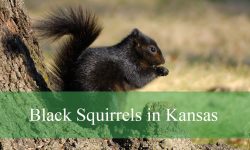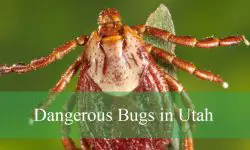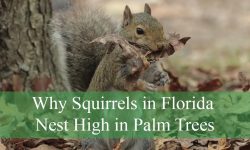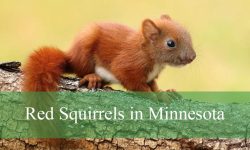Nevada’s vast landscapes, from sunbaked deserts to forested mountain slopes, provide a home to a surprising variety of dove and pigeon species. These graceful birds are more than symbols of peace—they are an integral part of the state’s ecosystems, thriving in both wild and urban environments.
Across the Mojave Desert and in bustling cities like Las Vegas, you’ll find Nevada’s distinctive doves adding beauty and serenity to the scenery. From the soft coos of the Mourning Dove to the bold markings of the White-winged Dove, each species brings its own charm and behavior to the region.
In this guide, we’ll explore nine species of doves and pigeons found across Nevada, complete with identification tips, physical traits, and fascinating facts about their feeding habits, calls, and preferred habitats.
Common Types of Doves and Pigeons Found in Nevada
Rock Pigeon (Columba livia)
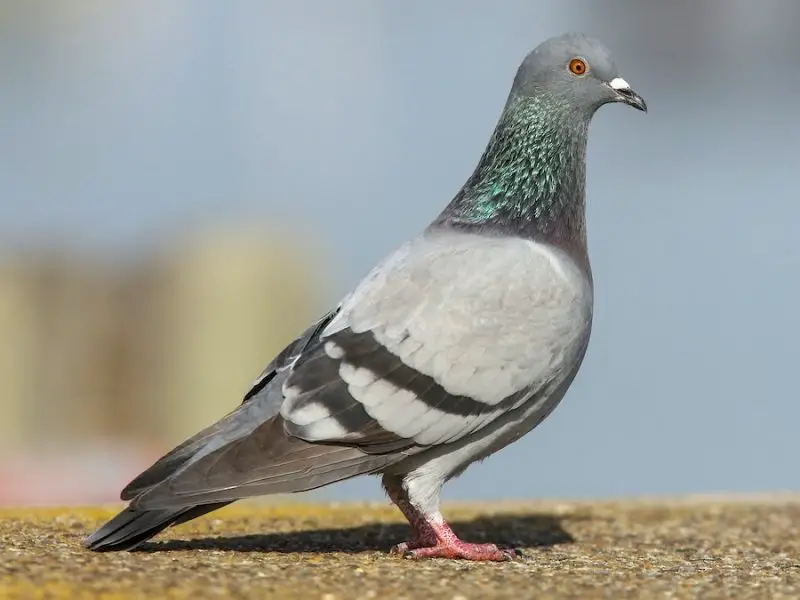
The Rock Pigeon, also known as the common city pigeon, is one of the most widespread birds across Nevada, particularly in urban areas such as Las Vegas, Reno, and Carson City. Recognizable for its plump body, short neck, and small head, this species displays a wide range of colors—from bluish-gray with iridescent green and purple neck feathers to rare white or reddish morphs. Adults typically measure 11 to 13 inches long with a wingspan of about 20 to 26 inches. Their distinctive two dark wing bars and white lower back are reliable identification markers when they take flight.
Rock Pigeons are highly social birds that thrive in flocks, often roosting on ledges, under bridges, or atop buildings. They are descendants of domesticated pigeons introduced by European settlers, and their adaptability has made them successful in both urban and rural environments. These birds exhibit strong homing instincts, which historically made them valuable as messenger pigeons.
Their diet mainly consists of seeds, grains, and small bits of human food scraps. In city parks and plazas, they are often seen pecking at bread crumbs or spilled grain. In more natural desert-edge settings of Nevada, they may feed on wild grass seeds and small invertebrates. Rock Pigeons are opportunistic foragers, often feeding in flocks on the ground where food is abundant.
The cooing of Rock Pigeons is a soft, rhythmic series of “coo-OO-oo” notes that males use to attract females or establish territory. Their flight is strong and direct, with rapid wingbeats and occasional glides. In Nevada’s dry climate, they often gather near water sources or shaded urban areas, adapting well to both desert and human-made habitats.
Band-tailed Pigeon (Patagioenas fasciata)
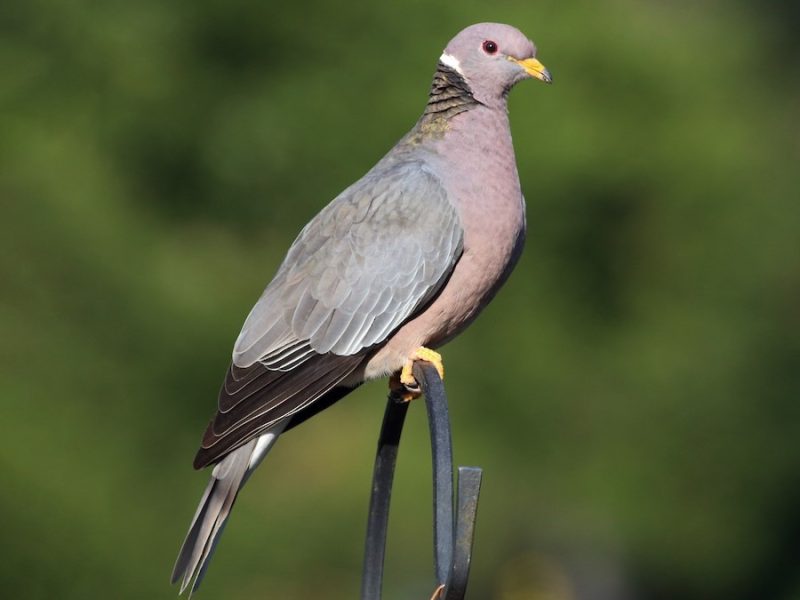
The Band-tailed Pigeon is a large, elegant dove native to the mountainous forests of western North America. In Nevada, it can be found in the higher elevation coniferous forests of the Sierra Nevada and the Spring Mountains. Measuring about 14 to 16 inches in length with a wingspan reaching 26 inches, it is noticeably larger than the Mourning Dove. Its plumage is mostly soft gray with a purplish wash on the head and neck and a distinctive white crescent at the nape. The “band-tail” name comes from the broad gray band at the tip of its long tail.
This species prefers cool, forested canyons and mountain slopes, where it perches high in trees. Unlike Rock Pigeons, Band-tailed Pigeons are shy and wary, often flying off at the first sign of disturbance. They gather in small to medium-sized flocks, especially during late summer and fall, when they move around in search of food sources such as acorns and berries.
Their diet varies with the season. Acorns are a favorite food, along with pine nuts, wild berries, and various seeds. They also occasionally consume small insects or snails for added protein. During migration, Band-tailed Pigeons may visit backyard feeders offering cracked corn or sunflower seeds, though they remain much less common in residential areas than their city-dwelling relatives.
The cooing call of the Band-tailed Pigeon is a deep, owl-like “hoo-hoo-hoo,” softer and slower than that of the Mourning Dove. They are known for their graceful flight, with powerful wingbeats and gentle glides. In Nevada, these pigeons are typically observed from late spring through early fall before moving to lower elevations or southward during the colder months.
European Turtle-Dove (Streptopelia turtur) (Accidental)
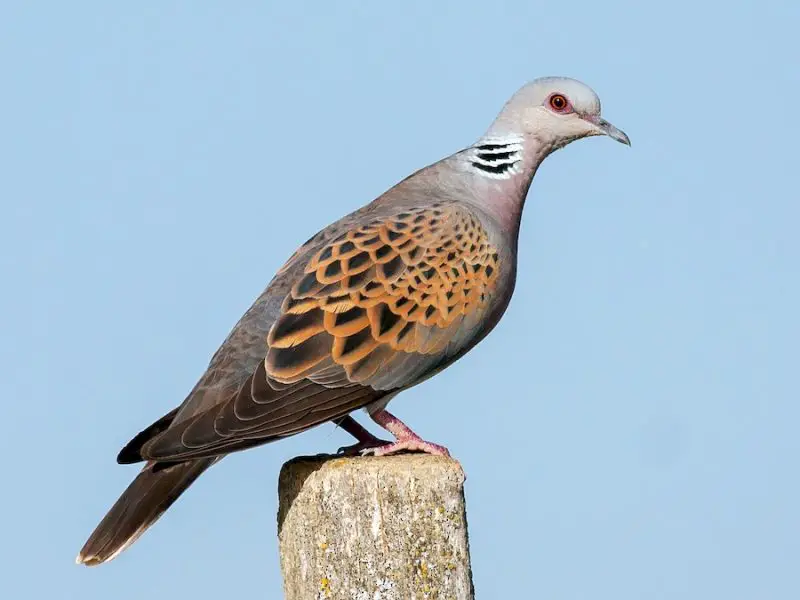
The European Turtle-Dove is a rare accidental visitor to Nevada, usually spotted only during exceptional migration events or as an escaped bird from captivity. Native to Europe, Asia, and parts of North Africa, this species is admired for its delicate beauty and soft, mournful song. It measures about 10 to 11 inches long with a slender body, long tail, and distinctive chestnut and black scaling on its wings. The neck features a black-and-white patch, and the eyes are a striking red.
This dove prefers open woodlands, farmlands, and hedgerows in its native range. In Nevada, accidental sightings typically occur in rural agricultural zones or near wetlands that mimic its preferred habitats. It’s a highly migratory bird, spending summers in Europe and winters in Africa—so its presence in Nevada is truly exceptional and often causes excitement among birdwatchers.
The diet of the European Turtle-Dove consists mainly of small seeds and grains, which it forages from the ground. In its home range, it often visits stubble fields after harvests. Should it appear in Nevada, it would likely feed in farmlands, grasslands, or near seed-rich areas along the edges of irrigated fields.
Its call is a gentle, rhythmic “turrr-turrr,” which gives the species its name. This cooing is softer and more melodic than that of other doves. Due to habitat loss and hunting in parts of its native range, the European Turtle-Dove population has declined significantly. Its accidental appearances in Nevada serve as a rare reminder of the global wanderings of migratory birds.
Eurasian Collared-Dove (Streptopelia decaocto)
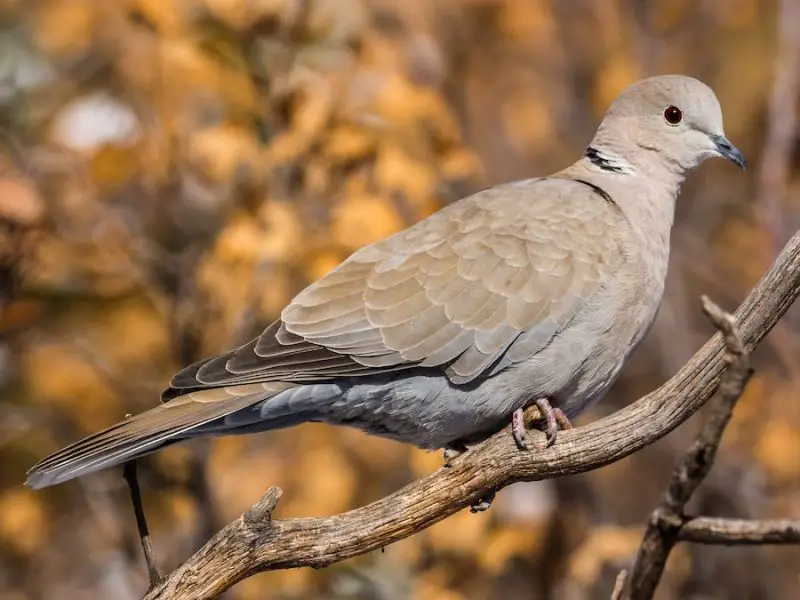
The Eurasian Collared-Dove is one of the most successful dove species in North America, rapidly expanding its range since its introduction in the 1980s. In Nevada, it is now a common sight in suburban areas, farmlands, and small towns across the state. The bird is easily identified by its pale gray plumage, long squared tail, and a narrow black collar around the back of the neck. Adults measure 12 to 13 inches long with a wingspan of 18 to 22 inches.
Highly adaptable, this species thrives in both human-dominated landscapes and open rural settings. It often perches on power lines, fences, and rooftops, emitting its familiar three-note cooing: “coo-COO-coo.” This call is repeated rhythmically throughout the day, especially during the breeding season. Unlike many native doves, Eurasian Collared-Doves can breed year-round in warm regions of Nevada.
Their diet mainly consists of grains, seeds, and fruits. They frequently visit backyard feeders, often displacing smaller native doves due to their size and boldness. In agricultural areas, they feed on waste grain and spilled corn around barns or silos. They are ground foragers, preferring to walk and peck rather than scratch at the soil.
In flight, the Eurasian Collared-Dove displays a graceful glide with steady wingbeats and white-edged tail feathers that flash when turning. They are known for their calm, confident behavior around people and have become one of Nevada’s most recognizable suburban birds. Despite their non-native origin, they have established stable populations throughout the state’s valleys and towns.
Inca Dove (Columbina inca)
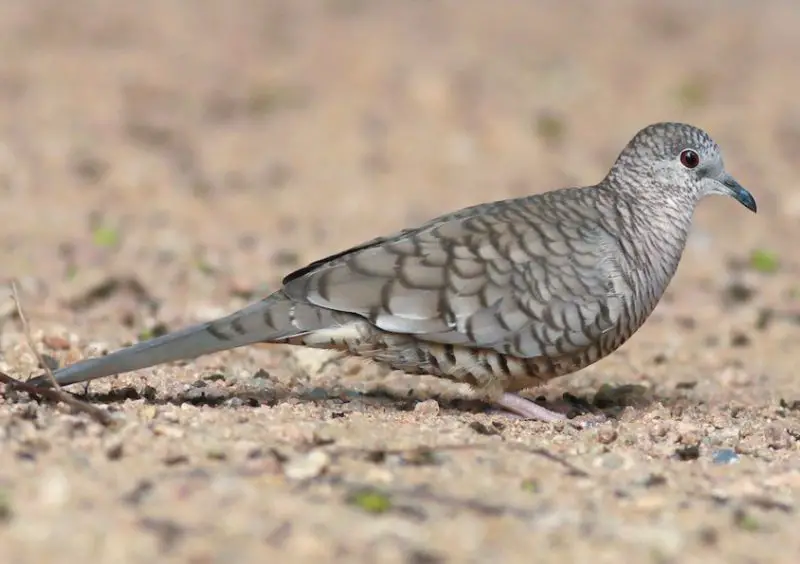
The Inca Dove is a small, slender bird easily recognized by its scaled appearance—each feather edged in dark brown or black, giving the impression of fine mosaic patterns. Measuring only about 8 inches long with a wingspan of around 12 inches, it is one of the smallest doves in Nevada. Its long, narrow tail has white edges that are particularly visible in flight. The species is native to the southwestern United States and Mexico, and it has become increasingly common in southern Nevada, especially around Las Vegas and Henderson.
Inca Doves are often seen in residential yards, parks, and open scrublands where they forage on the ground for seeds. They prefer warm, dry environments and are well-adapted to desert conditions. These doves are often observed sunning themselves with spread wings to absorb heat on cool mornings or huddling closely in small groups during cold spells.
Their diet primarily consists of grass seeds, grains, and small bits of vegetation. They often visit bird feeders and will feed alongside other dove species, though their small size sometimes puts them at a disadvantage. In desert oases or urban areas, they seek out reliable water sources, which are crucial for their survival in arid climates.
The cooing of the Inca Dove is a pleasant, repetitive “coo-coo-coo,” sounding softer than that of the Mourning Dove. When flying, their wings produce a light rattling sound. Inca Doves are known for their gentle nature and tolerance of human presence, making them a frequent and endearing sight in southern Nevada neighborhoods and desert-edge gardens.
Common Ground-Dove (Columbina passerina)
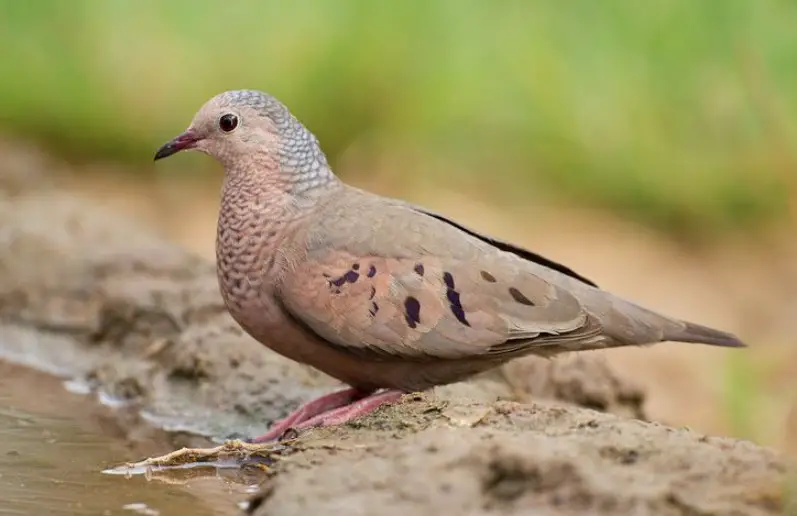
The Common Ground-Dove is the smallest dove species found in Nevada, measuring just about 6.5 to 7 inches long with a wingspan of 10 to 11 inches. It has a compact, short-tailed body and a scaly appearance similar to the Inca Dove, though its coloring is warmer—pinkish-brown to gray with a faint purplish hue on the head and neck. The reddish base of its bill and small size help distinguish it from other doves. In flight, the chestnut underwings flash brightly, making it easy to recognize even from a distance.
This species prefers open, arid habitats such as desert scrub, dry riverbeds, and agricultural fields across southern Nevada. It is particularly common near the lower Colorado River Valley and areas surrounding Las Vegas. Common Ground-Doves are secretive and often stay close to the ground, where they blend easily into their sandy surroundings. They tend to walk or run rather than fly when disturbed, relying on camouflage for safety.
Their diet consists mostly of small seeds from grasses and weeds, though they will also consume a few insects during breeding season for extra protein. They forage quietly on the ground, often in pairs or small groups. Unlike more urban doves, Common Ground-Doves rarely visit feeders unless the area provides open, bare soil and abundant seeds. They require access to water and may frequent the edges of irrigation ditches or small ponds in desert regions.
The call of this tiny dove is a soft, mournful “woop-woop-woop,” slower and lower-pitched than that of larger species. During the cooler hours of the morning and evening, males can be heard calling from low perches or open ground. These gentle birds are well adapted to Nevada’s dry environments, finding shelter under shrubs and thriving in areas where other doves might struggle with heat and scarcity of resources.
Ruddy Ground-Dove (Columbina talpacoti) (Rare)
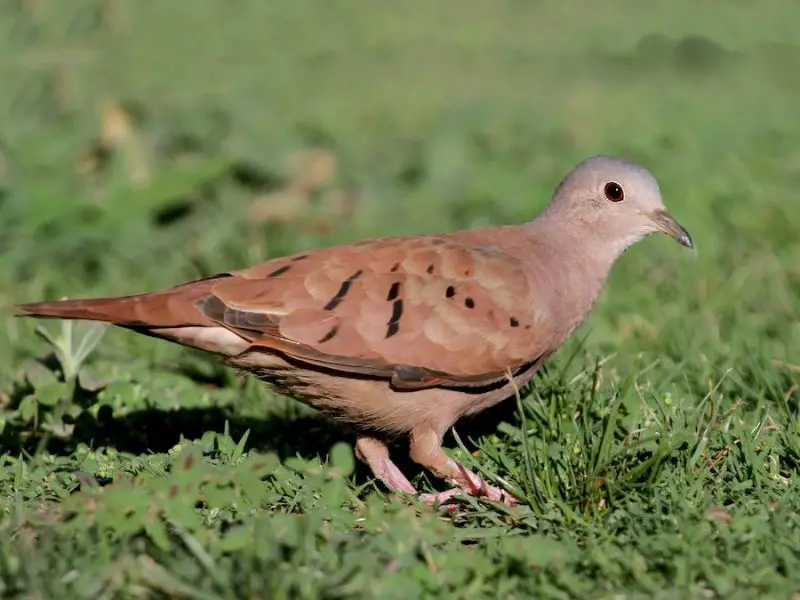
The Ruddy Ground-Dove is a rare and occasional visitor to Nevada, with sightings typically limited to the southern regions near the Arizona border. Native to Mexico and Central America, this species measures about 7.5 inches long with a wingspan close to 11 inches. Males are easily recognized by their reddish-brown plumage and dark wings, while females and juveniles are duller grayish-brown with subtle scaling on the breast. Their compact body and fast, low flight resemble those of the Common Ground-Dove.
This species prefers open, grassy areas, farmlands, and lightly wooded regions. In Nevada, accidental records often come from desert oases, urban parks, or areas with consistent water and vegetation—places that mimic their native habitats. Their presence is sporadic, often coinciding with unusual weather patterns or dispersal events from southern populations expanding northward.
Ruddy Ground-Doves feed primarily on seeds and grains, foraging quietly on bare soil or among short vegetation. They are ground-dwellers, rarely perching high except to rest or survey their surroundings. When startled, they take off quickly with sharp wingbeats and a soft whirring sound. Though similar to other ground-doves in behavior, the male’s rich ruddy coloration and more vivid underwing make it a striking sight for birdwatchers lucky enough to spot one in Nevada.
Their vocalization is a series of soft, rhythmic “coo-oo” notes, often delivered from the ground or low branches. During calm mornings, their cooing can blend with the gentle desert breeze, creating a peaceful ambiance. While still considered rare in Nevada, climate shifts and gradual range expansion may increase their occurrences in the future, especially in southern desert towns with ample green spaces and bird-friendly habitats.
White-winged Dove (Zenaida asiatica)
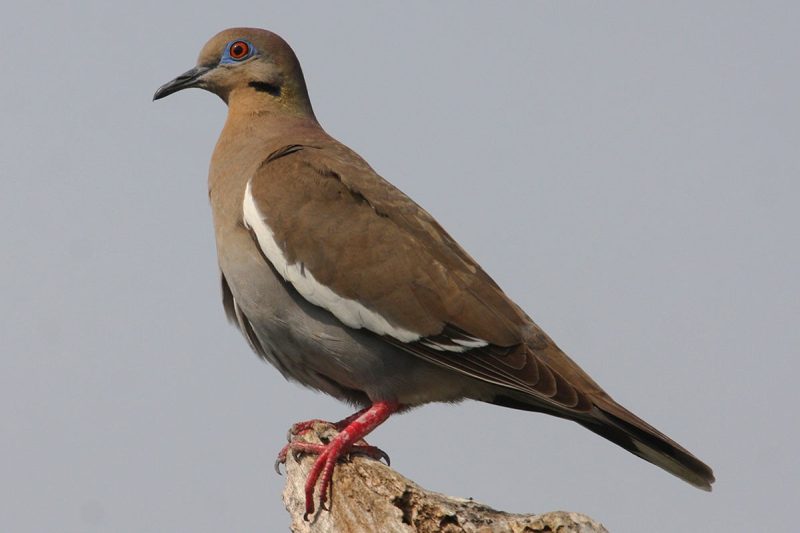
The White-winged Dove is a large and striking species, measuring around 11 inches in length with a wingspan of 18 inches. Its overall plumage is light grayish-brown, accented by a bold white edge along the wing that flashes brilliantly in flight. The blue ring around its eyes and pinkish legs add a touch of elegance. It resembles the Mourning Dove but is stockier and has a squared tail rather than a pointed one. In Nevada, it is commonly seen in the southern regions, especially around Las Vegas and the Mojave Desert oases.
These doves thrive in desert habitats, mesquite woodlands, and urban gardens. They are highly adaptable, often nesting in backyard trees, palm fronds, or saguaro cacti in warmer parts of the state. During the breeding season, they form loose colonies and can be seen perched on wires or foraging in open areas. The White-winged Dove’s resilience to heat and arid conditions makes it perfectly suited to Nevada’s desert environment.
Their diet consists mainly of seeds, grains, and fruits. They are particularly fond of seeds from desert plants like mesquite, as well as cultivated grains and sunflower seeds from bird feeders. During summer, they play an important ecological role by dispersing seeds of saguaro cacti and other desert flora. They often feed in flocks early in the morning and late in the afternoon when temperatures are cooler.
The call of the White-winged Dove is a distinctive, rhythmic “who-cooks-for-you” or “hoo-hoo-hoo-hoo” sound, often heard echoing through desert canyons or suburban neighborhoods. Their flight is swift and direct, with the white patches on their wings visible from afar. In Nevada, these doves bring a touch of the tropics to desert landscapes, symbolizing the adaptability and beauty of wildlife in harsh conditions.
Mourning Dove (Zenaida macroura)
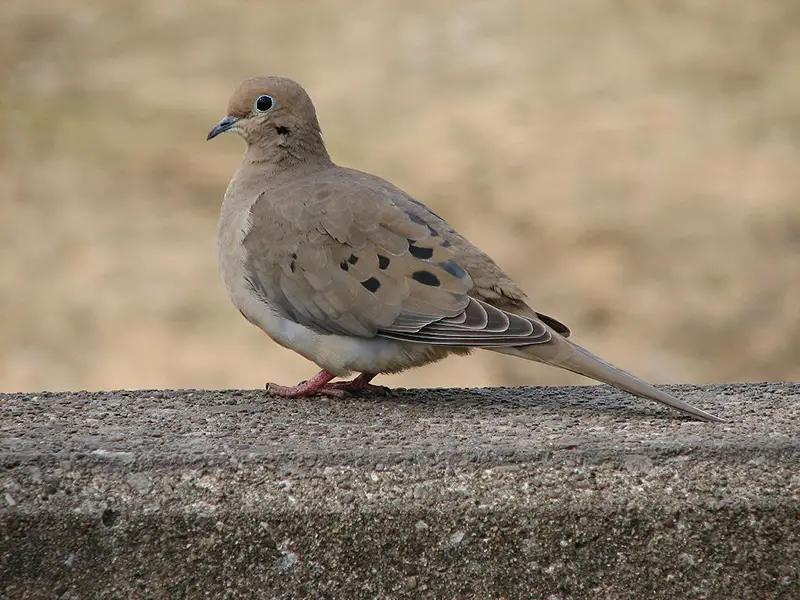
The Mourning Dove is one of Nevada’s most widespread and familiar birds, easily recognized by its slender body, long pointed tail, and soft grayish-brown plumage. Adults measure about 12 inches long with a wingspan of up to 18 inches. Their wings have distinctive black spots, and the long tail has white edges that flash during flight. The bird’s gentle appearance is complemented by its large, dark eyes and graceful posture. Mourning Doves are found throughout Nevada—from high desert valleys to farmlands, urban neighborhoods, and even mountain foothills.
These doves are highly adaptable and thrive in open habitats with scattered vegetation. They are common at backyard feeders, especially those offering millet or cracked corn. Mourning Doves often perch on wires or rooftops, cooing softly as they survey their surroundings. They prefer to build simple twig nests in trees, shrubs, or even on man-made structures. In Nevada, their breeding season can extend from early spring through late summer, sometimes producing multiple broods each year.
The diet of the Mourning Dove consists almost entirely of seeds, which they collect from the ground. They feed on grasses, grains, and weed seeds and are often seen foraging in open fields or along roadsides. Their methodical, head-bobbing walk and soft fluttering flight are characteristic behaviors. Water is essential for them, so they frequently visit birdbaths, ponds, or irrigation canals in desert regions.
The name “Mourning Dove” comes from its sorrowful cooing—an elongated “oo-AH-oo-oo-oo” that carries through quiet mornings. This gentle sound has become one of the most familiar bird calls in North America. During flight, their wings produce a sharp whistling sound, which helps signal danger to nearby birds. In Nevada, Mourning Doves are not only a common sight but also a cherished part of the state’s avian landscape, symbolizing peace and resilience amid the desert’s harsh beauty.
Tips for Identifying and Observing Doves in Nevada
1. Look for Subtle Color Differences
Many doves in Nevada may appear similar at first glance, especially from a distance. Pay close attention to plumage shades, wing markings, and tail shapes. For example, the Mourning Dove has a long pointed tail with white edges, while the Eurasian Collared-Dove shows a squared tail and a distinctive black collar around its neck. Subtle pinkish or bluish tints on the neck can also help identify species like the Rock Pigeon and Band-tailed Pigeon.
2. Observe Their Habitat
Different species favor different environments. White-winged Doves and Inca Doves are often found in southern Nevada’s desert suburbs, while Band-tailed Pigeons prefer cooler, forested mountain slopes. Observing where the bird is foraging or nesting can give you a strong clue about its species. For instance, ground-dwelling species like the Common Ground-Dove and Ruddy Ground-Dove stay low and blend into arid landscapes.
3. Listen to Their Calls
Each dove has a unique call that can serve as an excellent identification tool. The Mourning Dove’s mournful “coo-oo-oo” contrasts with the rhythmic “coo-COO-coo” of the Eurasian Collared-Dove. The White-winged Dove’s call is distinctive—often described as “who-cooks-for-you”—and carries far across desert canyons. Learning these calls can help you identify doves even when they are hidden from view.
4. Watch Their Flight Pattern
Flight behavior can be just as telling as plumage. Rock Pigeons have a powerful, direct flight with rapid wingbeats, while Mourning Doves exhibit graceful glides and sharp wing whistling on takeoff. Ground-doves typically fly low and fast, disappearing quickly into nearby vegetation. Observing how they take off and land can often confirm your identification.
5. Visit Key Birding Locations
Nevada offers excellent dove-watching opportunities throughout the state. Explore areas such as the Las Vegas Wash, Lake Mead National Recreation Area, and Great Basin foothills for a variety of species. Early morning and late afternoon are the best times for observation when doves are most active and vocal. Always carry binoculars and stay patient—doves often reveal themselves quietly and gradually.
FAQs About Doves and Pigeons in Nevada
What is the most common dove in Nevada?
The Mourning Dove is the most common and widespread species across Nevada. It thrives in open fields, suburban areas, and deserts alike, making it easy to spot throughout the year.
Are Eurasian Collared-Doves native to Nevada?
No, the Eurasian Collared-Dove is a non-native species introduced from Europe in the late 20th century. However, it has adapted so successfully that it’s now one of the most frequently seen doves in Nevada’s towns and rural areas.
Where can I see Band-tailed Pigeons in Nevada?
Band-tailed Pigeons are typically found in the higher elevation forests of western Nevada, particularly in the Sierra Nevada and Spring Mountains. They prefer coniferous and mixed-woodland habitats rather than deserts or urban zones.
Do all doves make cooing sounds?
Yes, but each species has its own distinct call. The Mourning Dove has a plaintive, mournful coo, while the Inca Dove produces a faster, rhythmic series of “coo-coo-coo.” Some species, like the White-winged Dove, have calls that are easily recognizable once learned.
Can doves survive in Nevada’s desert climate?
Absolutely. Species like the White-winged Dove, Inca Dove, and Common Ground-Dove are perfectly adapted to hot, arid environments. They conserve water efficiently and rely on early morning feeding and shaded resting areas to withstand the extreme desert heat.

